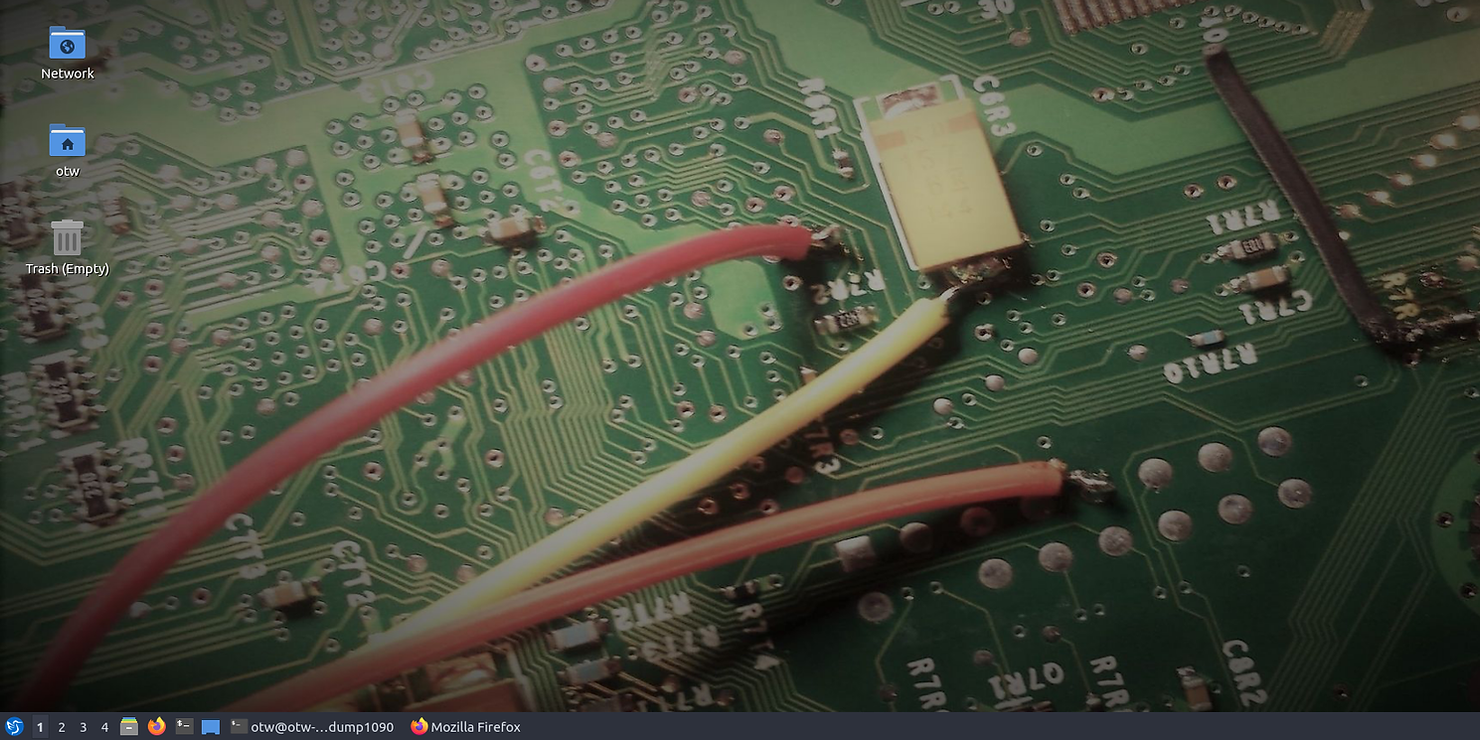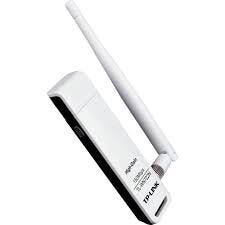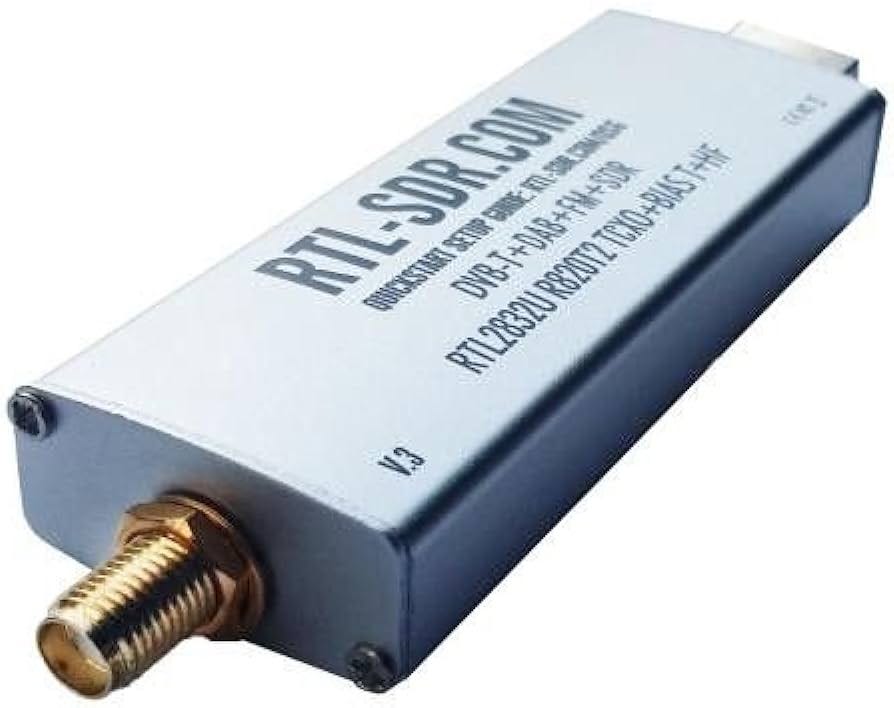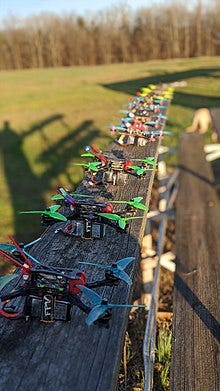Raspberry Pi & Sigint: Selecting Your Sensors
If you aren’t a medium member, you can read with no paywall via substack
In this previous article, we looked at configuring your SD card to run Dragon OS on the Raspberry Pi. This distro, which is optimized for signals intelligence comes packed full of software packages that will help you find, record and analyse signals across the radio spectrum.
In the interests of optimisation though, we’ll usually need to add a few additional sensors to make the most of the software package. Namely, an RTL-SDR and a Wi-Fi card that is capable of monitor mode. While most people will probably want to deal with Bluetooth devices as well, for detection purposes we can look at using the Raspberry’s onboard Bluetooth package for this. Let’s get started!
Dragon, APT & The Terminal
Based on Ubuntu, and using the APT package manager, you’ll probably find Dragon pretty easy to get the hang of. The menu system is even easier as it’s simply broken down into two sub-menus, Ham Tools & Other. While this sounds pretty straightforward, when we explore some of the packages we soon start to see that this distro is packed full of some very useful tools.
With plenty of GUI-based tools, we won’t need to use the Terminal for everything. However, depending on your Wi-Fi card, you probably will need to use the terminal to switch it into monitor mode correctly. While the steps for this will vary according to the type of card used, you should be able to find tutorials online to assist with this.
If you're new to the terminal though, you might find it easier to use a Wi-Fi card that doesn’t require any additional drivers to operate correctly. While cards like the WN-722NV2 are a cheap and easily available option, they aren’t exactly beginner-friendly on most systems. Options from Alfa Wireless can be a great way to avoid facing any additional configuration issues. 
The RTL-SDR
It’s fair to say that the one thing that sets Dragon apart from its pen-testing brethren like Kali Linux or Parrot OS is the broad functionality that it brings to the table with Software Defined Radio dongles. If you haven’t used one of these before or you’re a newbie to the world of radio, these little USB-based dongles are a cheap and affordable way to start unlocking parts of the radio spectrum quickly and easily.
Based on the R820T TV tuner, they’ve undergone further development over the years, becoming more stable and more refined. While they lack the capability that you’ll find on more expensive SDR systems, for many they are the gateway to a whole new world of digital signals.
However, it’s important to understand when selecting your RTL that the specifications can vary significantly, often as much as the price! When you’re shopping around for an SDR, you’ll typically find one with a metal housing (to reject stray signals), an external antenna connector (to explore the full range of bandwidth) and a TXCO (to provide frequency stability) is going to be your best bet.
If you’ve skipped the RTL to move to a more feature-rich unit, then depending on the system you’re using you can probably still use it with Dragon OS. However, products like the SDRPlay may require you to use their software packages to run effectively.  This unit has a SMA connector, metal housing and TXCO. It’ll work great on your Dragon OS rig. Source: Amazon.com
This unit has a SMA connector, metal housing and TXCO. It’ll work great on your Dragon OS rig. Source: Amazon.com
Limitations
Like many cheap systems, you’ll find that the RTL works perfectly and adequately, providing you work within some limitations that are inherent to its design. If you are expecting the same sensitivity and stability that you see in receivers that can cost hundreds of dollars more then it’s fair to say you’ll probably be disappointed. But if you’re looking for a cheap way to get started, along with plenty of resources available online then this is most certainly the hardware for you.
The two biggest issues these units will face though are usually issues around signal rejection and stability. If you’re in a metropolitan area you may find that your receiver is overwhelmed by strong signals like FM radio stations or mobile phone towers.
And regardless of where you are, you may find that your unit is slightly off frequency. While the TXCO can often assist in correcting this, the easiest way to do this is to use a tool like Kalibrate to calculate the offset from a known strong signal.
Community Development
It’s worth mentioning that due to the near prolific use of the RTL at current levels, there’s been a large range of tools and plugins released by the community to enhance the experience. While Dragon OS comes with a good range of tools, depending on your project you may find these to be inadequate for your needs. Should this be the case, there is a wide range of additional resources available online via the RTL-SDR blog that can probably help you with the tools you need.
With plugins that cover everything from Weather Satellite decoding to digital voice and digital signals like the Amateur Packet Reporting System (APRS), simply browsing some of the available tools can be an interesting educational journey.  We’ll be taking a closer look at drones in some future articles. Source: Wikipedia
We’ll be taking a closer look at drones in some future articles. Source: Wikipedia
Coming Next
Now we’ve got your Pi configured with Dragon OS and sporting a nice array of onboard sensors the next step is to use this package to start finding signals in your local environment. And of course, we have you covered as in the next few months we’ll start to explore the different processes that we can use to help explore wireless protocols in more detail.
As part of this, we’ll look at some digital and voice signals in the amateur radio part of the spectrum, and start taking a look at some of the digital signals we might find transmitting in the license-free Industrial, Scientific & Medical (ISM) band.
One thing that should be particularly interesting though, is exploring some of the emissions we might see used by various drone systems. This includes both first-person view (FPV) drones and the ubiquitous DJI models, including their Remote ID systems.
Lastly, don’t forget that we’re looking for writers of all levels to produce their own content for the publication. If you’ve started a project, why not start a discussion as well and submit an article. We’d love to hear from you!
Medium has recently made some algorithm changes to improve the discoverability of articles like this one. These changes are designed to ensure that high-quality content reaches a wider audience, and your engagement plays a crucial role in making that happen.
If you found this article insightful, informative, or entertaining, we kindly encourage you to show your support. Clapping for this article not only lets the author know that their work is appreciated but also helps boost its visibility to others who might benefit from it.
🌟 Enjoyed this article? Join the community! 🌟
💙 Support me on Ko-fi: Investigator515
📢 Join our OSINT Telegram channel for exclusive updates or
📢 Follow our crypto Telegram for the latest giveaways
🐦 Follow us on Twitter and
🟦 We’re now on Bluesky!
🔗 Articles we think you’ll like:
- What The Tech?! Rocket Engines
- OSINT Investigators Guide to Self Care & Resilience
✉️ Want more content like this? Sign up for email updates

























































